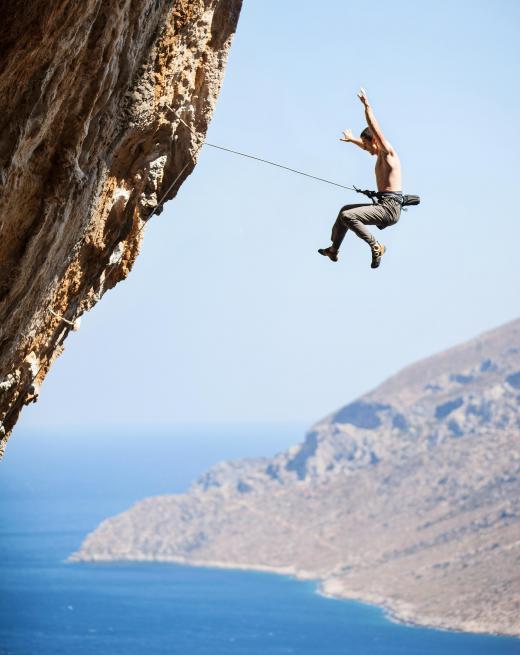Mountaineers require a number of qualities in their gear that are not found in traditional rope. These features require special development, and expensive materials, resulting in a more costly final product. Since they are most often carrying their rope long distances, and climbing with the extra rope coiled on their person, weight is a crucial factor. The difference of a few pounds on a 50m (164 foot) rope may make the difference between completing a climb and having to turn back because of fatigue. Mountain climbing rope must be absolutely reliable; a mountaineer is putting his or her life in the hands of this material, and no price seems to be too high to ensure a rope doesn't slice through on a sharp rock or abrade over time and snap while supporting their weight.
Basic mountain climbing rope costs in excess of $100 for a 50m (164') length. This rope is expected to be supple, strong, and light-weight. While one could, in theory, climb with a cheap $20 length of rope, for most mountaineers the extra cost spent on synthetic materials and thousands of hours of rigorous stress-testing is well worth the added security and lighter load. For those wishing to go the extra mile, there are a couple of additional features which may be found in mountain climbing rope.

Half ropes are particularly thin ropes (usually less than 9mm in diameter) favored by many climbers. Advantages of half ropes include greatly reduced weight and far less drag from the rope when rappelling. The primary disadvantage is a greater chance that the rope will be cut or heavily abraded when running over sharper rocks or ice chunks. Most half ropes on the market today are specifically designed to make them more resistant to edge abrasion. These mountain climbing ropes are created using patented treatments, coating the rope with a strong sheath and making them resistant to water. The cost of chemicals and patent fees to the manufacturer is passed along to the consumer, resulting in a good 60-70m (197'-230') rope being rather expensive, costing between $150 and $300.

Dry ropes are climbing ropes which focus on keeping moisture off and out of the rope entirely. These ropes are used primarily in snow and ice climbing, though some people prefer them even for traditional climbs. In addition to using the same high-quality materials found in virtually all mountain climbing rope, dry rope is coated with a clear plastic finish which keeps moisture off and out of the core of the rope, as well as helping to lubricate the rope. This type of technology is often referred to as a hydrophobic treatment, and results in mountain climbing rope costing between $150 and $200 for 50m (164').
As mountaineering becomes more and more popular as a hobby, the technologies continue to be developed at a staggering rate. Especially flexible, super-lightweight, and more and more impervious sheathes are all features found in the most cutting-edge mountain climbing ropes. For these newest technologies prices can be mind-blowing, but they quickly trickle down to a consumer affordability, allowing anyone to avail themselves of the new breakthroughs.
